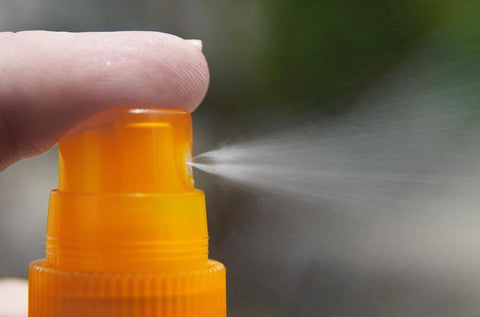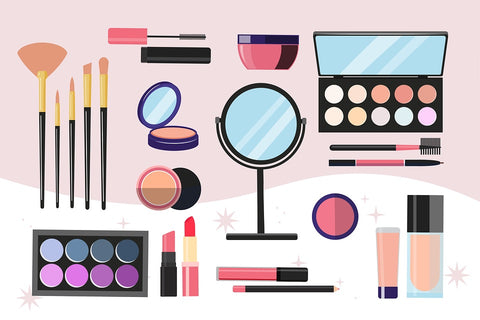How to Scale Skincare Brands
As a skincare business, there is no doubt that you will have knowledge and passion for your industry. But, understanding the practical side of the beauty business will ensure that you can successfully scale skincare brand while still keeping your passion alive through your products, marketing and branding.
This article will give you an overview of how successful indie beauty brands have succeeded before you and provide an idea of how you can apply these strategies to your brand via marketing, manufacturing and branding.

The history of scaling beauty brands
When you think of other beauty brands, you quickly realise that they all have been in the same position you are currently in. They will have had to decide which avenue to go down to generate as much profit as possible and find loyal customers to support their brands' growth. So, looking into their journey will benefit you, as you can see the steps that work in the process.
Take Glossier, for example. This indie brand started in 2014 and has since generated $1 billion. Glossier's founder Emily Weiss made her move by targeting a niche part of the beauty industry that wasn't being met in 2014. The brand's launch happened at the same time as Instagram and women empowerment movements became more of a focal point in the industry, and she used this to her advantage.
Surprisingly, many more prominent beauty brands weren't targeting this niche and were still using outdated approaches to target their products and marketing towards inspiring women to change their features and cover them up with makeup. However, Glossier saw that this was becoming less appreciated and popular, for that matter. So, they shifted their marketing strategy to focus on the concept of "skin first, makeup second".
This was a great move, socially and economically, as beauty lovers who didn't feel seen by other brands finally felt like they had a place to embrace their natural features. And this trend has only grown since 2014, to the point where beauty giants have picked up this approach and switched their product lines to cater for customers who love makeup and skincare but want the product to benefit their skin rather than just its appearance.
The importance of having a niche
Of course, part of Glossier's appeal is the customer reviews and the fact people love their products. But, when we cast our minds back to 2014, none of this success would have been possible without a well-thought-out beauty marketing strategy complete with cohesive and robust branding that stood out.
Glossier stood out well due to the niche market they chose to target. They wanted to be approachable and not use glamorous, luxurious models in their ads but instead use natural and stripped-back marketing to come across as fresh and modern. This was echoed through their packaging, too, thanks to their stripped-back and clean aesthetic for the past seven years.
How to apply this to your own beauty brand
So, we can learn from indie brands such as Glossier that finding a niche brand message and sticking to it through cohesive marketing does work. But, to get to this point, you must first produce skincare products that encapsulate what you want to achieve.
By now, you probably have an idea of the first few products you want to release, or you might already be in these stages, but putting thoughts towards your skincare products should be a lengthy process to ensure you are getting it right. This will help you with every element, from beauty manufacturing to branding.
Let's say you want to occupy the organic skincare industry; tailoring your branding, name and marketing towards naturally sourced ingredients will ensure all customers can quickly tell that you are an organic skincare brand. You can also find a more niche marketing strategy by targeting consumers with sensitive skin. Organic ingredients have been shown to cause less irritation due to the lack of synthetic chemical preservatives.
So, keep this business mindset from starting your journey in the cosmetics industry. This mindset will give you more chance of starting a business with true scalability due to genuinely knowing your brand's mission, target audience and the ingredients you will tend to choose.

2022 skincare business trends
In 2022, it is important to note that skincare is taking over the beauty industry. A 2021 Mintel report revealed that consumers prefer to look for products that benefit their skin, whether that be foundations that include SPF or eyeliners that are supercharged with Vitamin E. This has pushed makeup brands to have a clean beauty approach to ensure they tap into this lucrative side of the beauty industry.
The great thing for skincare brands is that you're already at this stage and can offer products that the makeup industry cannot. For example, it is difficult for makeup products to include essential fatty acids such as cocoa butter, but you can easily incorporate them into a specific part of your skincare line.
Choose a manufacturer that can support your growth
You must find a manufacturer that can provide the ingredients you need for your vision to come to fruition. In addition, you want your skincare products to be easy for your customers to incorporate into their skincare routine, so using compatible ingredients is crucial.
Many indie labels will also act as private labels and create their product lines by outsourcing through a contract manufacturer. This can be an excellent way to ensure you generate profit while making your product at a low cost, with experts there to advise you on your creation and ingredient lists.
Support doesn't only stop at manufacturers; there is an extensive range of ways to get funding for your business. Or you could go down the route of the indie beauty expo, as they have the largest exposition for indie beauty brands worldwide and have helpful information and resources to support your growth.
Concentrate on social media - but don't focus on it too much
It is easy to assume that social media is the main contributing factor to skincare brands gaining traction and success in the global market. But, we need to remember there is more than these face-value posts that social media users interact with.
For example, the beauty trend of 'slugging' was a massive trend on Tiktok at the start of 2022 but has since dwindled. So, while it can be fun to play into these trends, you don't want to make that your sole purpose. Instead, focus on trends that have longevity and a lasting impact on skincare lovers.
There are beauty secrets we all want to know and specific ingredients that always have an interest in them (essential oils, hyaluronic acid, vitamin c serums etc.). So, keeping these in mind will work well and make your brand more adaptable as different trends arise.

Final thoughts
There are many factors in scaling up a skincare business, but some should be focused on more than others. Although products from your own store will likely be sold online, all beauty entrepreneurs should focus on the longer picture rather than micro trends that may not be favoured in years to come.
Unfortunately, we have seen this fast rise to fame and quick decline happens all too often since the start of Instagram. Take Becca cosmetics (owned by Estée Lauder), for example. They had to fully close down their company last year. In 2016 when powder highlighters were all the rage, we never would have seen this coming, but this was a micro trend that didn't have long-lasting power.
So, our takeaway is finding a niche market with lasting power will make it easier for you to market your brand for a more extended time. At the same time, a reliable manufacturer will ensure your skincare ingredients and beauty products are worth your customer's time.
Frequently Asked Questions
How do I make my own skincare brand?
To start your own skincare brand, you should first conduct thorough research and find a niche that you feel isn't currently being met by the skincare industry. From here, you can bring your vision to life by working with manufacturers and creating ingredient lists that stand out.
How is the skincare market segmented?
The skincare market is generally segmented through the formulation of a product. For example, creams, lotions, powders, sprays etc. However, the most popular skincare product type is creams because they cater to different skin issues and types.
How do you make a luxury beauty brand?
A luxury beauty brand will target an affluent clientele by using more prestigious and grand content marketing. For example, rather than your social media posts being relatable to the masses, you will instead create content that is authentic and driven by storytelling.
